The health benefits of chocolate have been known for more than a thousand years. Studies link its consumption to improved cardiovascular health, increased cognition, enhanced blood flow, and even anti-aging benefits. All good reasons to eat more, right? Before you use this info to justify your intake, learn what gives chocolate its health promoting properties and how the benefits change depending on the type you consume.
It’s All About the Cocoa Polyphenols
Chocolate is made up of two components: cocoa solids (or powder) and cocoa butter. It is the cocoa powder in chocolate that contains polyphenols known for their antioxidant and anti-inflammatory properties. While a variety of polyphenols exist in cocoa, the primary polyphenols are called flavanols. It is the polyphenols in chocolate that are responsible for its health promoting properties.
Forest to Table: Going From Cacao to Cocoa to Chocolate
It’s easy to get confused with all the different descriptors for chocolate from white, milk, dark, to cocoa, cacao, and cacao nibs. Here is a little history on the background of chocolate and how it gets from the forest to consumption.
Cacao, pronounced 'ca-cow,' is believed to be a misspelling of 'cocoa' by early English traders.1 Cacao comes from the cacao tree, also known as Theobroma Cacao. Cacao trees grow only in tropical climates and take about five years to become strong enough to produce pods which contain cocoa beans that can be turned into cocoa. The tree flowers the entire year and of the thousands of flowers it may only have 40 or so that turn into cacao pods. After 5-6 months the pods are ready to be harvested. Depending on the region, harvests may take place twice a year. Once the seeds (i.e., cacao beans) have been extracted from the pods, they go through a process called fermentation which takes about 5-7 days and allows the aromatic properties of cacao to develop. Unfortunately, many of the polyphenols are destroyed in this process. From here the beans are laid out and left to dry in the sun for about 6 days before going off to be processed.2
During processing, cacao beans are sorted, cleaned and dried. The shells are then removed (winnowed) to produce cacao nibs which are roasted to further enhance flavor and aroma 3. These are then ground into a liquid mass called chocolate liquor (no alcohol here). Chocolate liquor can be made directly into chocolate or further refined through a pressing process to extract the cocoa butter from the cocoa solids 2,3. The cocoa solids can be pulverized into cocoa powder, which retain the polyphenol content in dry form.3 The cocoa butter can then be added back to the chocolate liquor to make chocolate. The amounts of chocolate liquor, cocoa butter and cocoa solids differentiates the type of chocolate to be made 2.
Factors Impacting Total Polyphenol Content
Fermentation of the cacao bean comes with a significant loss of the polyphenol content, and a corresponding reduction of its considerable health benefits. The type of bean, where it is grown, and other factors like temperature, and potentially further alkali treatment of the cocoa powder, all play a role in determining the levels polyphenols in the final product4.
Alkalization is the process of adding potassium carbonate to the cocoa powder to reduce the levels of polyphenols to improve the taste, also known as “Dutch refining.” The more treated the cocoa powder, the greater the loss of polyphenols.
In addition to processing, the levels of polyphenols in cacao beans are highly dependent upon country of origin. It has been shown that a three-fold difference can exist in the range of total polyphenol content pending where the cacao trees are grown.4 Despite 30% of the worlds’ cacao being produced in the Ivory Coast, the raw cacao plants with the highest levels of polyphenols are actually grown in the highlands of Ecuador.5
Have You Seen Our New Cocoa Polyphenols? Learn More
What to Know Before Eating Chocolate
Not all chocolate is created equal. Some have a taste for sweet chocolate (either white or milk chocolate) that's high in fat and sugar. Others prefer a more bitter chocolate (such as dark chocolate) with a stronger and more sharp taste. Dark chocolate is high in cocoa solids (powder) and contains the highest levels of polyphenols of any chocolate. The inclusion of milk as an ingredient differentiates milk chocolate from dark chocolate. Pure white chocolate is 100% cocoa butter, essentially pure fat. While it may melt and your mouth, it’s devoid of any cocoa polyphenols.
Manufacturers add more ingredients like milk and sugar to make chocolate more appealing. As those extra ingredients pile up, the percentage of “cocoa” in the final product goes down. The typical chocolate candy bar has about 10% “cocoa” and is high in sugar and saturated fat.
While higher in cocoa polyphenols, consuming dark chocolate on a regular basis isn’t the most ideal. Some varieties contain 7 grams of saturated fat, supplying more than 35% of your daily intake, as well as a lot of sugar to increase the hedonic response (i.e., make it taste better). Furthermore there is virtually no protein to help stabilize blood sugar levels, which negates many of the health benefits of the remaining cocoa polyphenols.
Top 4 Chocolates with the Most Polyphenols:
#1: Cacao Nibs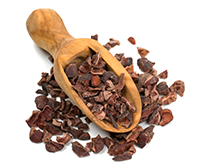
Nibs are considered chocolate in its purest form as they are simply crushed cacao beans. They are rich in polyphenols, fat, minerals (including the heavy metal, cadmium) and fiber and have a crunch like chocolate chips without the added sugar.
#2: Cocoa Powder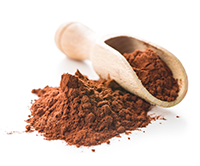
Once the fat is removed from the cacao nibs and minimally processed into ground cocoa powder, it is higher in polyphenols on a per gram basis. This also makes it richer in naturally occurring heavy metals requiring you to limit the amount you consume.
#3: Dark Chocolate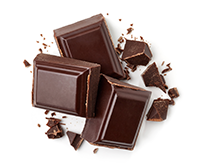
Primarily made up of cocoa powder, cocoa butter and added sugar this not-so-naughty treat provides adequate amounts of polyphenols. Moderation is still key here with the fat and mineral content.
#4: Milk Chocolate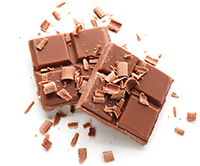
The addition of milk and greater amounts of sugar significantly dilute the levels of polyphenols making this a not-so-great choice. The bright side is that compared the other choices its lower in naturally occurring metals.
Worst Chocolate for Polyphenols:
White Chocolate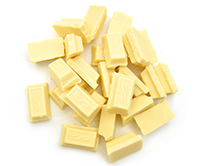
Zero, zilch, nada. Not a single cocoa polyphenol in this full fat, sugar rich, cocoa butter treat.
Why Zone Cocoa Polyphenols
To reap the health benefits that come with cocoa polyphenols requires higher levels of consumption. One of the major considerations when consuming cacao nibs and cocoa powders is that they naturally contain cadmium, a heavy metal. The problem is that higher intakes of cocoa polyphenols may come with high intakes of heavy metals.
What makes Zone cocoa polyphenols different is the processing innovation we’ve developed to increase the amount of polyphenols we can supply in a serving without the heavy metal contamination regularly found in cocoa products. We developed a proprietary cocoa extract using a unique purification process that allowed us to retain the maximum polyphenol content while minimizing the level of heavy metals. This process takes place once the cocoa powder is produced from the chocolate liquor. Our extraction technique led to the creation of our food products (ZoneRx bars and shakes) as well as our supplements (CacaoRx and CacaoRx Plus) allowing individuals to gain the greatest benefits of cocoa in a high purity, high potency format.
A New Health Benefit of Cocoa – Improved Gut Health
One of the newer areas of emerging research is the role of cocoa polyphenols in gut health. The gut has one of the highest population of microbes (anything too small to be seen by the human eye like bacteria and viruses). Some of these microbes can be a significant source of inflammation, which can impact both the blood and the brain. Due to their anti-inflammatory properties, it is likely that many of the health benefits of cocoa polyphenols come from their ability to improve gut health. The more cocoa polyphenols you consume, the healthier your gut becomes. This is why knowing what’s in your chocolate not only impacts gut health, but the rest of your body too.
Have You Seen Our New Cocoa Polyphenols?

References:
- Lebovitz, David. The Great Book of Chocolate: The Chocolate Lover's Guide, with Recipes. Berkeley: Ten Speed, 2004. Print.
- From cocoa to chocolate. Available at:https://www.barry-callebaut.com/en-US/group/cocoa-chocolate-expertise/cocoa-chocolate. Accessed: February 6, 2020.
- Processing Cocoa. Available at: https://www.icco.org/about-cocoa/processing-cocoa.html. Accessed: February 6, 2020.
- Coffee and Cocoa. Available at: http://phenol-explorer.eu/reports/43. February 6, 2020.
- Top 10 Cocoa Producing Countries. World Atlas. http://www.worldatlas.com/articles/top-10-cocoa-producing-countries.html.






Let Us Know What You Thought about this Post.
Put your Comment Below.